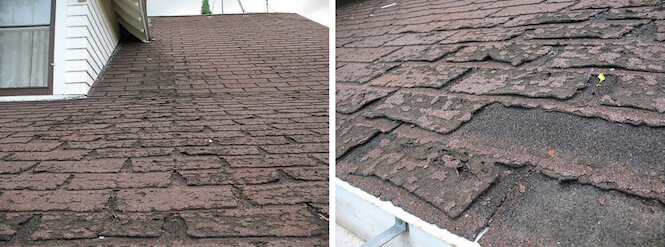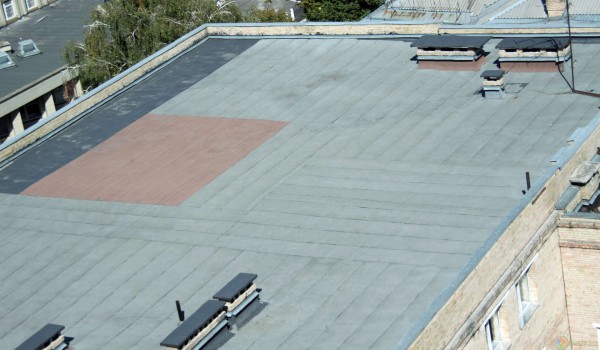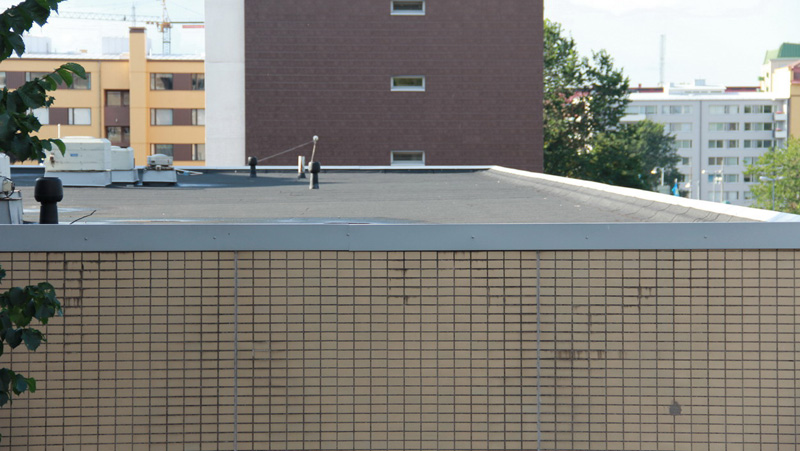Rely On A Roof Inspection Professional When You Need An Inspection
Roof Inspections
Why do I need a roof inspection?
You should inspect your roof or have a professional do it to spot damage, make necessary repairs, and discover flaws that may have occurred in workmanship. If you act before or as problems occur, you’ll extend the life of your roof and prevent problems that could affect the structure and contents of your home, as well as your family’s health.
How often should I get my roof inspected?
The National Roofing Contractors Association (NRCA) recommends checking your roof during the fall and spring to help spot potential problems. You should also inspect your roof after a major storm that involved high winds, hail or flying debris. It doesn’t matter how new a roof is, hail can damage or even ruin it enough to require a replacement.
DIY roof inspections
Sometimes homeowners can make simple checks to their home’s roof to find maintenance needs. But some problems are easily noticed even by the untrained eye. For those who choose to do it themselves, consider these NRCA tips. If you tackle the job, take the following safety precautions
Hiring a professional roof inspector
The NRCA recommends hiring a professional roofing contractor to inspect your roof. It’s safer, especially if you’re uncomfortable getting on a roof or if you’re not sure what to look for.

Things to Consider When Choosing a Roofing Company
Your roof is a vital part of your house, and you want to ensure that you take the best care of it so that it lasts as long as possible. You may know that you should be getting your roof inspected bi-annually, but don’t know how to choose the right roofing company for the inspection or for any other work. It can be difficult to decide on a roofer when there are so many options. And, with many of the options seeming a bit questionable, you don’t want to make the wrong choice!
ReviewsHow can a homeowner identify a quality roofer? A quick online search can often help to split the good from the bad roofing companies by the testimonials and reviews. When you are browsing a roofing company, does their site include legitimate reviews from happy customers? Happy customers are an assurance that the roofer you are considering knows how to take care of their clients.
Licensed, Insured and BondedA quality roofing company (and its technicians) will be licensed, bonded and insured. This protects you, the homeowner, and the company. If a technician hurts themselves on your property, the company needs to be insured so that you are not liable! Additionally, if you work with a company that is not licensed, you could see the consequences with your home insurance; your home insurance could cover your roof repair or replacement, but they will require you to hire a licensed company. Additionally, not working with a licensed roofing company can void your home insurance. So, if their work causes problems in the future, your insurance company can claim they are not liable to cover damage costs as you did not use a professional that was licensed.
Experienced with Insurance CompaniesYou will want to choose a roofing company that has experience handling insurance cases. Insurance companies typically follow meticulous steps for the insurance claim and expect full documentation of the entire project. Ensure that you are working with a roofing company that not only has experience handling insurance claims, but are also willing to help you work with the insurance company to get the most for your claim
Payment OptionsIt may seem obvious, but you should always discuss your payment options with any roofing company that you are considering. A great roofing company will offer free roof inspections and upfront pricing and have you sign off on all costs before they start the project. Lastly, discuss if payment will be required entirely upfront before the project begins, or if there is an option for a payment plan. A great roofing company will work with you to stay within your budget if necessary. They will ask you what your budget is and bring you material recommendations that align with what you’ve indicated.
When is the Best Time to Inspect Your Roof?
A roof inspection is one of those things we all tend to put off, but it’s an important part of your yearly home maintenance checklist.
The best time to get a roof inspection depends on your roof’s condition, your schedule, and the weather! And of course, a roof inspection is always a good idea after any unexpected (or expected) event that could cause damage, like a heavy tree branch falling on your roof.
Roof Inspections Are More Important than People Think
As long as water isn’t dripping from your ceiling, it’s easy to simply assume everything is fine. After all, you have plenty of other things on your home maintenance to-do list, right?
Should Roof Inspections Happen in Spring or Fall?
A quick Google search will tell you that spring and fall are the most popular times to get a roof inspection, and some people have very strong opinions on which is better. The truth is that the most important thing is just to get regular roof inspections when you need them, regardless of the time of year
Why You Might Get a Spring Roof Inspection
Winter rain, wind, and ice can damage your roof, and they also make it harder to identify any damage that’s there. Once spring hits and the rough weather is behind us, a roof inspection makes a lot of sense. It’s a good time to spot any winter damage and get it fixed before it gets any worse.
Understanding Home Roof Inspections
Roofing and Construction recommends that every potential home buyer get a complete home inspection before any money changes hands. It’s the best way to keep your dream home from quickly becoming a nightmare after you take ownership. The results from a home inspection will give you a powerful insight into the state of the home.
Ask the seller outright to pay for the cost of the new roof and have it installed. Prior to closing, it can be very difficult to get a new homeowner’s insurance policy on a home where the roof is damaged or too old.
Offer to split the cost. If the housing market is tough for buyers, or you think there’s competition for this particular home, then you can make an arrangement to divide up the cost of the new roof with the seller
Inspections to Maintain Your Home
Call a roofing contractor or a licensed inspector if you are curious about the condition of your home. Any new roof system is a big investment. As a result, you’ll want all the information possible if you’re considering a purchase, think you may need a new roof, or want to change the appearance of your roof to better match your home.
Roof Inspection Tips
Some of the best inspectors previously worked as contractors or in the construction industry, so you can look for that experience as a confidence booster. It’s perfectly acceptable to ask how many inspections they’ve performed, if they know what’s normal for the area and how long they’ve been in this profession.

Roof Inspection- A TOP Priority
The National Roofing Contractors Association suggests the homeowners should have their roofs inspected each year in the spring and fall. Inspecting your roof periodically can help you prevent costly structural damage to your home. Even the most durable roofs can show signs of weakness, especially after a season of snow and ice, like we experience in Michigan, or a season of heavy rainfall and wind
Trained Professionals
A trained professional is always your best bet for roof inspection. Roofing experts can identify damage that an untrained eye cannot see. Repairing damage before it becomes a real issue, can save homeowners thousands of dollars in repair and replacement costs.
AMR Experts
The experts at Roofs understand the importance of careful and thorough roof inspection services. This is why, during our initial consultations, we provide attic and roof inspections to inform homeowners of any problems that currently exist.
With the attic inspection, we’ll be able to give you a full report of your attic’s moisture levels, mold potential, insulation levels, and more. The roof inspection will allow us to identify any problems with your current roofing system, as well as measure it accurately, so we can provide you with the best possible roofing estimate.


